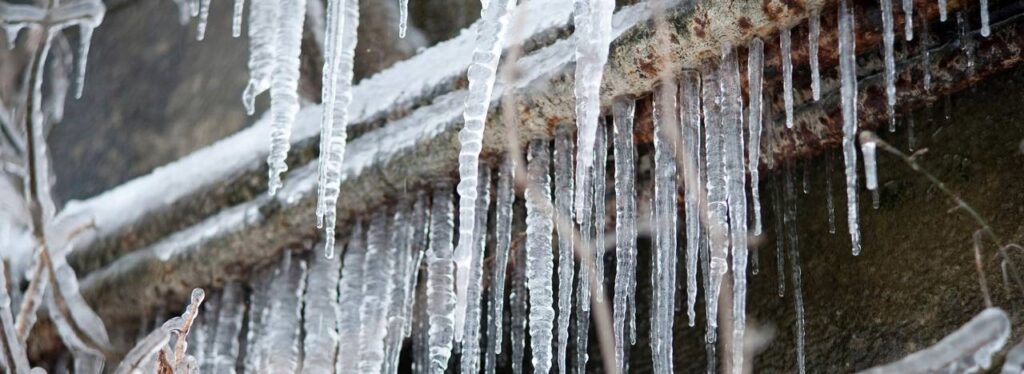How to Protect Plumbing System from Cold Weather: Key Tips
How to Protect Plumbing System from Cold Weather: Key Tips
Blog Article
Do you find yourself searching for ideas about Prevent Frozen Pipes ?

Winter can wreak havoc on your pipes, specifically by freezing pipes. Below's how to avoid it from occurring and what to do if it does.
Intro
As temperature levels drop, the risk of frozen pipes rises, possibly bring about costly repair services and water damages. Comprehending how to stop frozen pipes is critical for house owners in chilly climates.
Comprehending Frozen Pipes
What causes pipelines to freeze?
Pipes freeze when revealed to temperature levels listed below 32 ° F (0 ° C) for expanded periods. As water inside the pipes freezes, it expands, putting pressure on the pipe walls and potentially creating them to break.
Threats and damages
Icy pipes can lead to water interruptions, home damage, and costly repairs. Burst pipes can flooding homes and trigger considerable structural damages.
Indications of Frozen Water Lines
Recognizing icy pipelines early can stop them from bursting.
How to identify frozen pipes
Look for decreased water circulation from taps, uncommon smells or noises from pipes, and visible frost on exposed pipes.
Prevention Tips
Shielding at risk pipelines
Cover pipes in insulation sleeves or utilize warmth tape to safeguard them from freezing temperatures. Concentrate on pipelines in unheated or outside areas of the home.
Home heating methods
Keep indoor areas sufficiently heated, specifically areas with pipes. Open up cupboard doors to allow cozy air to circulate around pipelines under sinks.
Safeguarding Exterior Plumbing
Yard hose pipes and exterior faucets
Disconnect and drain pipes yard pipes prior to winter season. Set up frost-proof faucets or cover outside faucets with shielded caps.
What to Do If Your Pipelines Freeze
Immediate actions to take
If you believe icy pipelines, keep faucets open up to relieve pressure as the ice thaws. Make use of a hairdryer or towels taken in hot water to thaw pipes slowly.
Long-Term Solutions
Architectural adjustments
Consider rerouting pipes away from outside wall surfaces or unheated locations. Add added insulation to attics, basements, and crawl spaces.
Updating insulation
Purchase top quality insulation for pipes, attic rooms, and wall surfaces. Correct insulation assists keep regular temperature levels and reduces the risk of icy pipes.
Conclusion
Stopping icy pipelines needs positive steps and quick reactions. By understanding the causes, indicators, and safety nets, homeowners can shield their pipes during cold weather.
5 Ways to Prevent Frozen Pipes
Drain Outdoor Faucets and Disconnect Hoses
First, close the shut-off valve that controls the flow of water in the pipe to your outdoor faucet. Then, head outside to disconnect and drain your hose and open the outdoor faucet to allow the water to completely drain out of the line. Turn off the faucet when done. Finally, head back to the shut-off valve and drain the remaining water inside the pipe into a bucket or container. Additionally, if you have a home irrigation system, you should consider hiring an expert to clear the system of water each year.
Insulate Pipes
One of the best and most cost-effective methods for preventing frozen water pipes is to wrap your pipes with insulation. This is especially important for areas in your home that aren’t exposed to heat, such as an attic. We suggest using foam sleeves, which can typically be found at your local hardware store.
Keep Heat Running at 65
Your pipes are located inside your walls, and the temperature there is much colder than the rest of the house. To prevent your pipes from freezing, The Insurance Information Institute suggests that you keep your home heated to at least 65 degrees, even when traveling. You may want to invest in smart devices that can keep an eye on the temperature in your home while you’re away.
Leave Water Dripping
Moving water — even a small trickle — can prevent ice from forming inside your pipes. When freezing temps are imminent, start a drip of water from all faucets that serve exposed pipes. Leaving a few faucets running will also help relieve pressure inside the pipes and help prevent a rupture if the water inside freezes.
Open Cupboard Doors
Warm your kitchen and bathroom pipes by opening cupboards and vanities. You should also leave your interior doors ajar to help warm air circulate evenly throughout your home.

Hopefully you enjoyed our part on 6 Ways to Prevent Frozen Pipes. Thanks a ton for taking a few minutes to read our posting. Enjoyed our post? Please quickly share it. Help someone else discover it. I recognize the value of your readership.
Contact Us Now Report this page